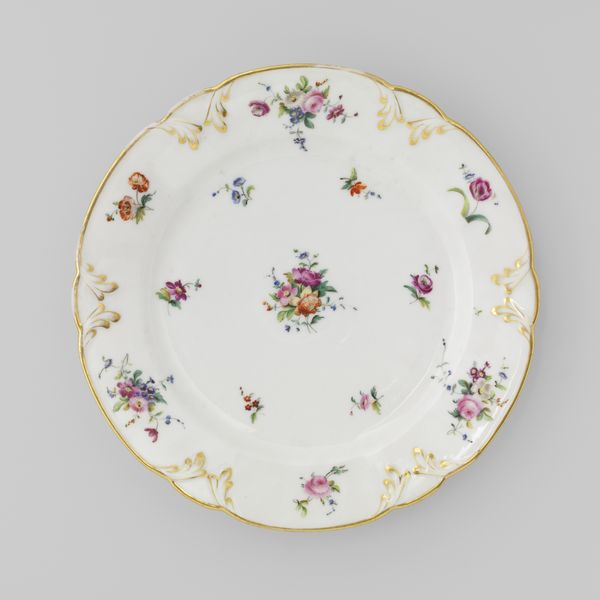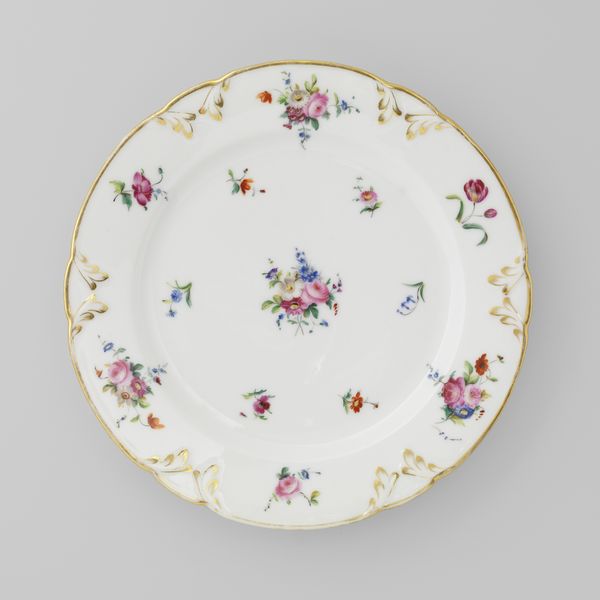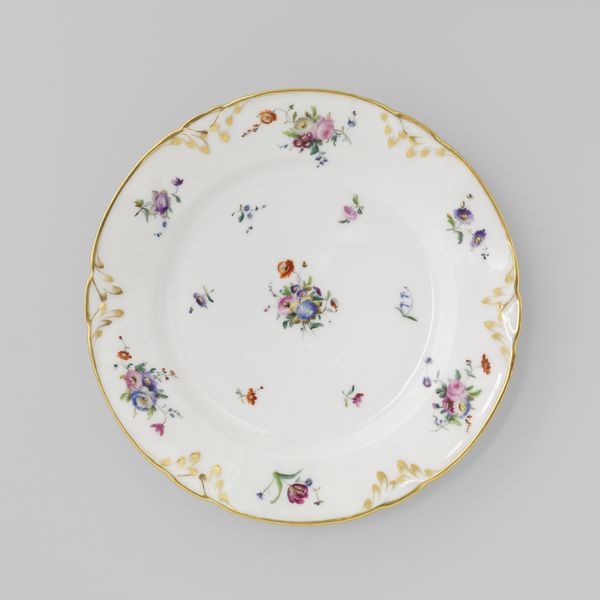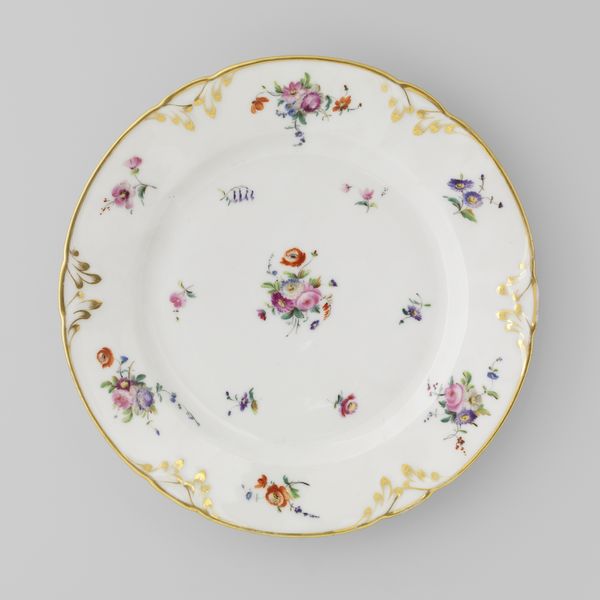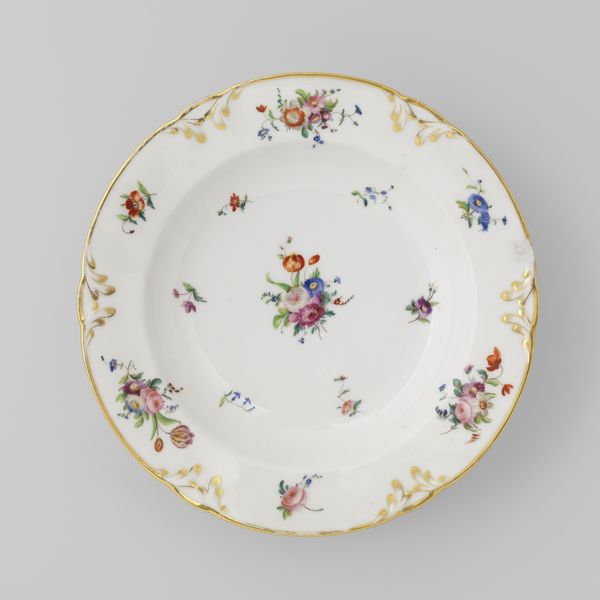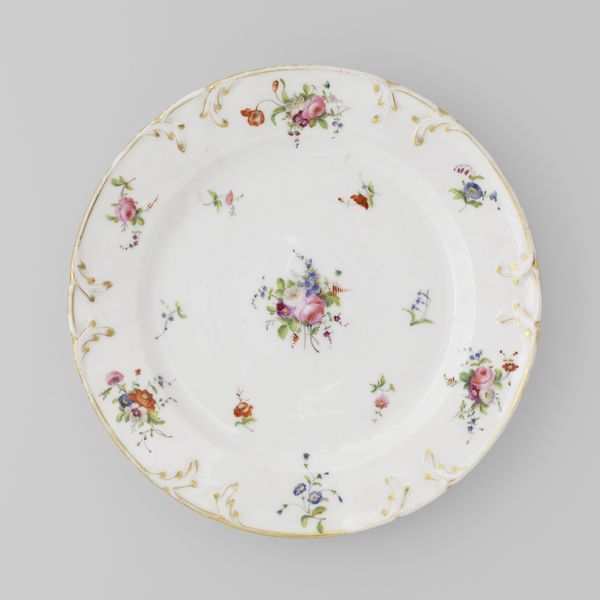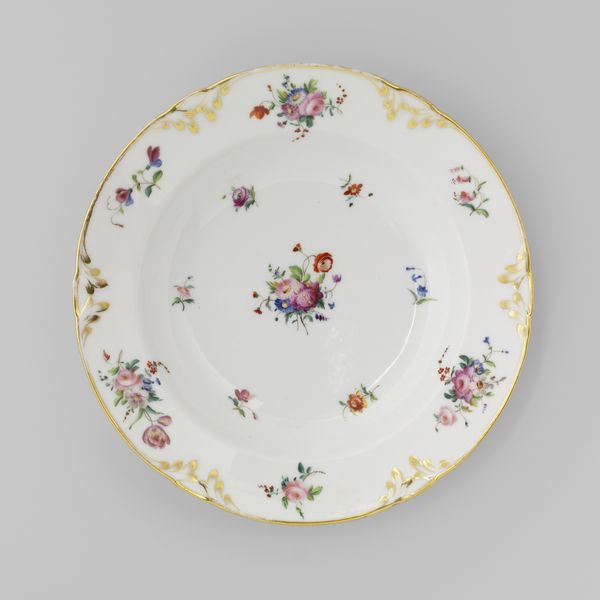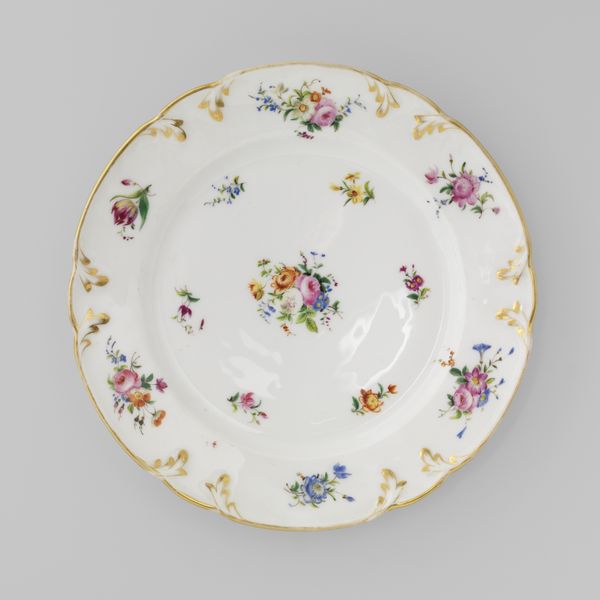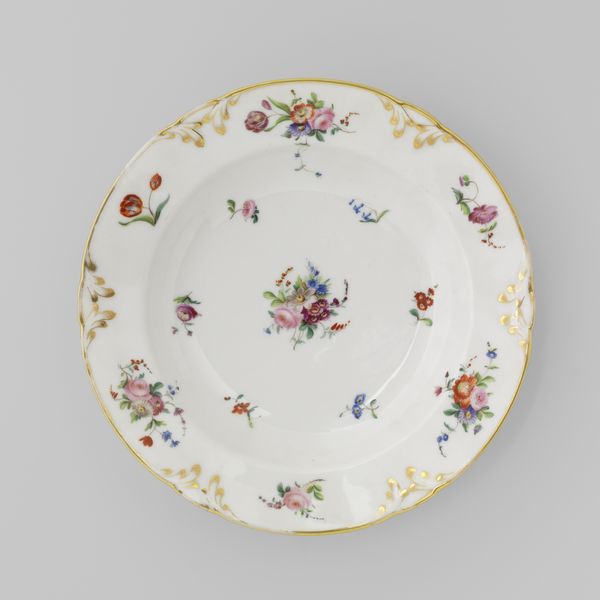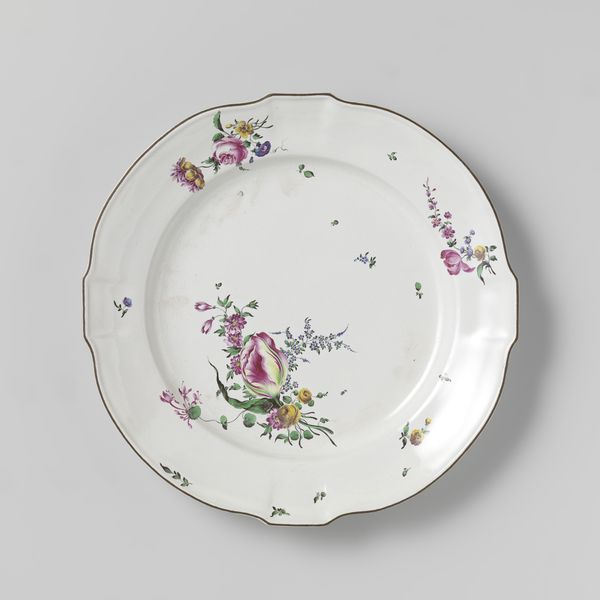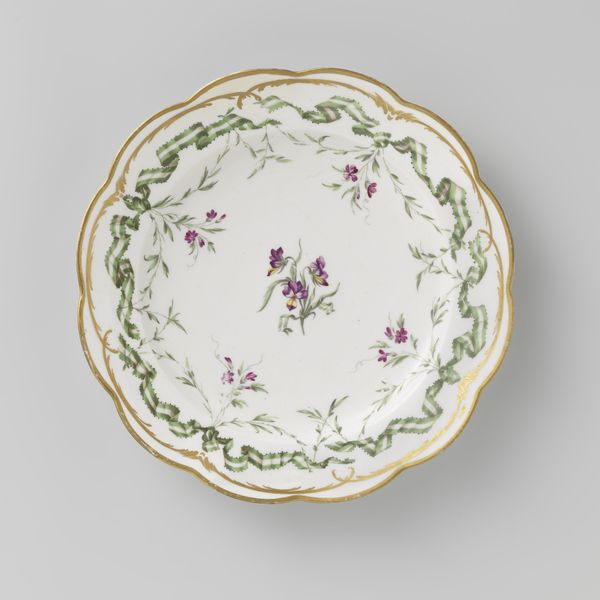
Dimensions: height 2.6 cm, diameter 23.5 cm, diameter 13.7 cm
Copyright: Rijks Museum: Open Domain
Editor: This is a ceramic plate made in Clignancourt, dating from about 1775 to 1790. It’s adorned with these delicate flower sprays, garlands and scrolls, and I immediately notice the asymmetry within that circular frame. How do you interpret this piece? Curator: The plate, seemingly a decorative object, becomes quite potent when situated within its historical moment. Rococo, with its flourishes and supposed frivolity, served the aristocratic elite. Consider the socio-political undercurrents: while this plate was being meticulously hand-painted, what societal inequities were being masked by this display of refinement? What forms of labour were exploited to afford such luxury? Editor: That’s a powerful point. So, the beauty of the plate might actually serve as a distraction from some troubling realities? Curator: Precisely. This aesthetic can be viewed as a tool that upheld class divisions. Each floral detail, each carefully placed garland, whispers of power and privilege. Look at its production; porcelain was prized and a guarded European secret at the time. Only a small part of society could use this tableware. Editor: So the plate, even if passively, is making a statement about status. How does it speak to modern ideas about wealth and societal hierarchy? Curator: Does it differ from our current obsession with branding and display? What materials are deemed acceptable expressions of class now and who dictates their worth? Reflect on fast-fashion imitations, their low price sustained through poor labor standards. The core issues haven't vanished; only transformed. What do you make of the gold edging? Editor: Now that you point it out, it feels more like a reinforcement of the power structures, especially against the floral, more organic components. This really shifts my perspective. Thanks for elaborating on the historical and social elements! Curator: My pleasure. This approach lets us not only enjoy aesthetics, but challenges us to consider whose stories are being told, and often, whose are suppressed, within artistic expressions.
Comments
No comments
Be the first to comment and join the conversation on the ultimate creative platform.
